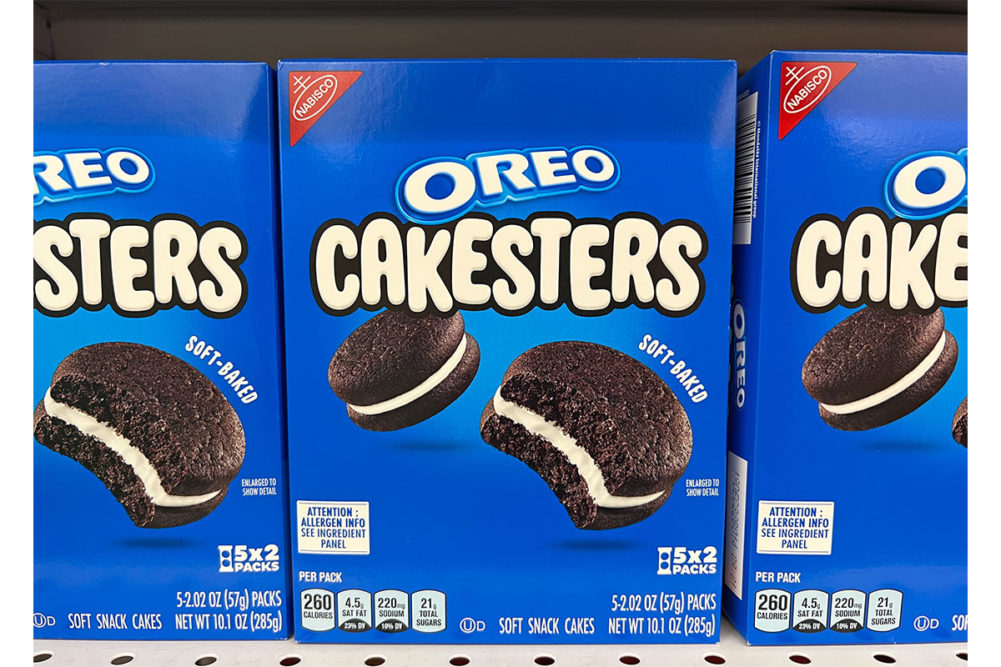BOSTON — As a natural extension of the biscuits market, baked snacks are a compelling space to compete in and one that Chicago-based Mondelez International, Inc. intends to continue to explore, said Dirk Van de Put, chairman and chief executive officer.
“Basically, it’s softer risk,” Mr. Van de Put said of the baked snacks market in a presentation at the Barclays Global Consumer Staples Conference on Sept. 6. “It’s made on the same equipment. It’s usually sold in a shelf close to biscuits. You can make a softer version of your biscuit.
“So for instance, we have a Petit-Beurre in Europe, which is a hard biscuit, but you have the soft version. Or, we now have the Cakesters of Oreo, which is the soft version of an Oreo. So first, it’s a natural expectant. (It’s) really normal that we will play in that space.”
Another compelling factor driving Mondelez’s interest in baked snacks is the size of the market. He said the biscuit market is about a $110 billion market, while baked snacks is about an $80 billion market. Both are growing at about the same speed, he noted.
Mr. Van de Put said the baked snacks market is very fragmented, which opens the door to consolidation opportunities. There is also a whole segment of what he described as “cheaper, not-so-great products.”
“We believe there’s an opportunity to bring more value and more premium approach to it — that’s really where we’re focused on,” Mr. Van de Put said. “We’re not looking to play into the more economic versions of cakes and pastries. We want to bring added value, more sophisticated products and brands to the space. So you have to think about an Oreo starting to play there or a Milka in Europe, or Cadbury is already in there. And then we complement that with acquisitions of products and brands that we don’t have and that are not our natural space.”
He mentioned Chipita and Give & Go as brands operating in different snacking occasions but delivering equally strong returns.
“I think there’s a whole opportunity for cakes and pastries,” Mr. Van de Put said. “That’s typically a space there. So the way we look at it is it needs to add something new to us. It needs to add value. It needs to be a step-up from what’s already available in the market. It needs to be a more sophisticated, high-quality product at a higher price point with the right margins. That’s sort of the way we judge this space. We don’t want to be in cakes and pastries at lower margins versus the rest of our business. So that’s how we look at it.”
Mr. Van de Put said there are plenty of opportunities in the baked snacks category, adding that Mondelez is probably “walking away from more opportunities than jumping on them.”
“The risks we’ve taken in our own brands have been very successful,” he said. “So we have Airy Cake on Oreo in China and Cakesters here under Oreo in the US. Both are doing very well. Those are the two big Oreo countries for us and that is a typical way of how you will see us attack that space.”
But it’s not just China and the United States where Oreo is making its mark. Six years ago there were no $100 million markets for Oreo. Today, there are six, with another four or five markets poised to get there, Mr. Van de Put said. He said three years ago the company was looking to get Oreo to $100 million in India. Now, the brand is pushing $300 million in that country.
“And so we seem to have found the key to develop Oreo around the world,” he said. “The key is quite simple. It’s a brand that has a unique positioning about staying playful. It’s in the space where kids and their parents touch. It has a unique moment, which is when the kid comes from home, there’s a whole ritual related to it with the milk. We found a way to really connect Oreo to the things that are happening that consumers are interested in. So we found a way to connect the brand to those areas or moments that consumers really like, and that’s working for it.
“We have done a lot of innovations. We do licensing in ice cream. We have partners that work with that, develop the Oreo merchandise and so on. So I think we found a way to really create a strong global brand. It’s $4 billion last year in ‘22. It’s going to be $5 billion next year. And I mean, to my opinion, it is already the world’s favorite cookie. But I would compare it to brands that have a bigger, $10 billion, $15 billion global presence. Oreo has that potentially. It’s just up to us to work it the right way.”




